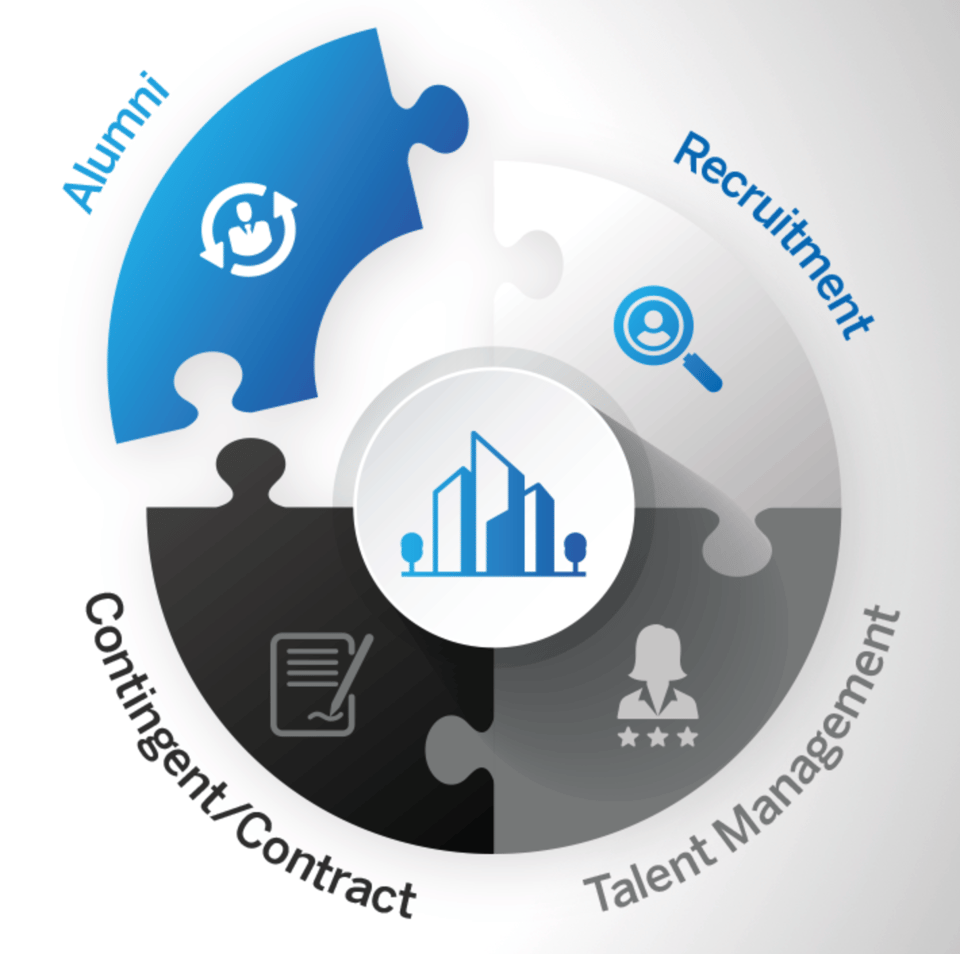Why Alumni Programs Are Essential for Employee Experience and Business Growth
Alumni programs are enabling companies to directly impact the bottom line with measurable results across the entire organization, quickly and at low...
Read more
Without an engaged Alumni Group of former employees, an organization cannot have a complete end-to-end employee experience.
Without an engaged Alumni Group of former employees, an organization cannot have a complete end-to-end employee experience. If businesses want to create a robust and forward-thinking Total Workforce Management strategy, their alumni must be part of the conversation.
Talent now comes in many forms; the traditional full-time and part-time alongside the recent expansion to include contingent or contract worker. What counts now is finding the right person with the right skills at the right time for the right role independent of their “employment status”. With this fresh lens on HR, the last mile of a Total Workforce Management strategy now includes Alumni.
Traditional definitions typically focused on existing employees; Attracting, acquiring and developing current talent from full and part-time employee pools. That definition fast became outdated with the growth in the gig economy and the contingent workforce, this too has now been expanded to include Corporate Alumni – the largest pool of verified and qualified talent outside of your organization and the importance of organization to maintain an engaged relationship with these Alumni Groups.
To date, the employee lifecycle has started and ended with applicants and employees. This policy overlooked that on departing a company, alumni still have the capacity to significantly impact and influence their previous employer.
With skills shortages and battles for top talent, alumni are a much needed and rich talent pool. Boomerang hires and retirees as a source of mentorship are on the rise too, with companies welcoming former employees back into their community to share their knowledge and experience. Alumni are customers and evangelists too. Bringing Alumni Groups into a Total Workforce Management Strategy completes the employee workforce circle, adding an indispensable community to an already thriving ecosystem.

Top talent, people with the coveted skills employers are after, are found in a variety of work arrangements. The digital transformation of the workplace landscape has changed the perception of workers and how they should work. As said in a recent SAP article, “People are mainly defined by their skills and their ability to contribute to business success, and less by their employment status with a company.
The relationship between organizations and workers has changed in fundamental ways, as many contributors are not payroll employees anymore, but rather part-time, freelance, and agency workers with a much looser connection to the corporation.” The adoption of a Total Workforce Management strategy blurs the lines between employee and contractor, while still keeping up with the compliance piece. This means that managers can find the right people, in the right working situation to help propel their business objectives in the right direction.
As employers procure workers from diverse employment engagements, standardizing work arrangements are key to the success of the employer/worker relationship, and Total Workforce Management is the equalizer. A Total Management Workforce strategy is the solution to merging human capital management (HCM) and contingent workforce management (CWM) because it stabilizes the otherwise siloed functions into one seamless unit.
This fusion affords organizations the capability to create a standardized work experience, enabling managers and workers total transparency of expectations for both parties. The culture and experience of one employer can be realized by each and every worker, no matter the nature of engagement.
The success of any enterprise program hinges on transparency and visibility. When it comes to an organization’s workforce, a Total Workforce Management strategy gives managers the agility to tap any employee – full-time, contingent, or alumni – for various roles or projects for the company, and at a record pace. Creating this multifaceted pool of workers, managers can quickly ascertain “who is available for this project?”, “is there someone in our network, past or present who can fill this role?”, “is this person qualified” and other talent needs and queries that arise. Alumni offer immediate recruitment potential and ‘quality control,’ ensuring managers know who they are recruiting.
Though the benefits of including our alumni are clear, only 16% of organizations have this type of program in place today whilst over 58% expect to make total workforce management a reality within the next two years.
Businesses only prosper when they create a talent supply chain that is multifaceted and diverse, whether alumni or current workers. And if businesses want to create a robust Total Workforce Management strategy, alumni have to be part of the talent conversation now to efficiently locate, engage, source, and manage talent under a consolidated program.
To enhance your employee experience from onboarding to alumni, you must have an exit strategy in place. Read more on the advantages of offboarding for your employer brand.
NEWSLETTER


Alumni programs are enabling companies to directly impact the bottom line with measurable results across the entire organization, quickly and at low...
Read moreSeptember 5, 2025
Exit interviews are the part of offboarding that will determine the relationship you have with former employees. Here's the best practices for using...
Read moreAugust 30, 2023
Steps to take during offboarding to ensure that departing employees become alumni and a source of future opportunities for the business.
Read moreMay 8, 2023
Build new revenue streams, save on recruitment and enhance your employer brand, all through the power of alumni.